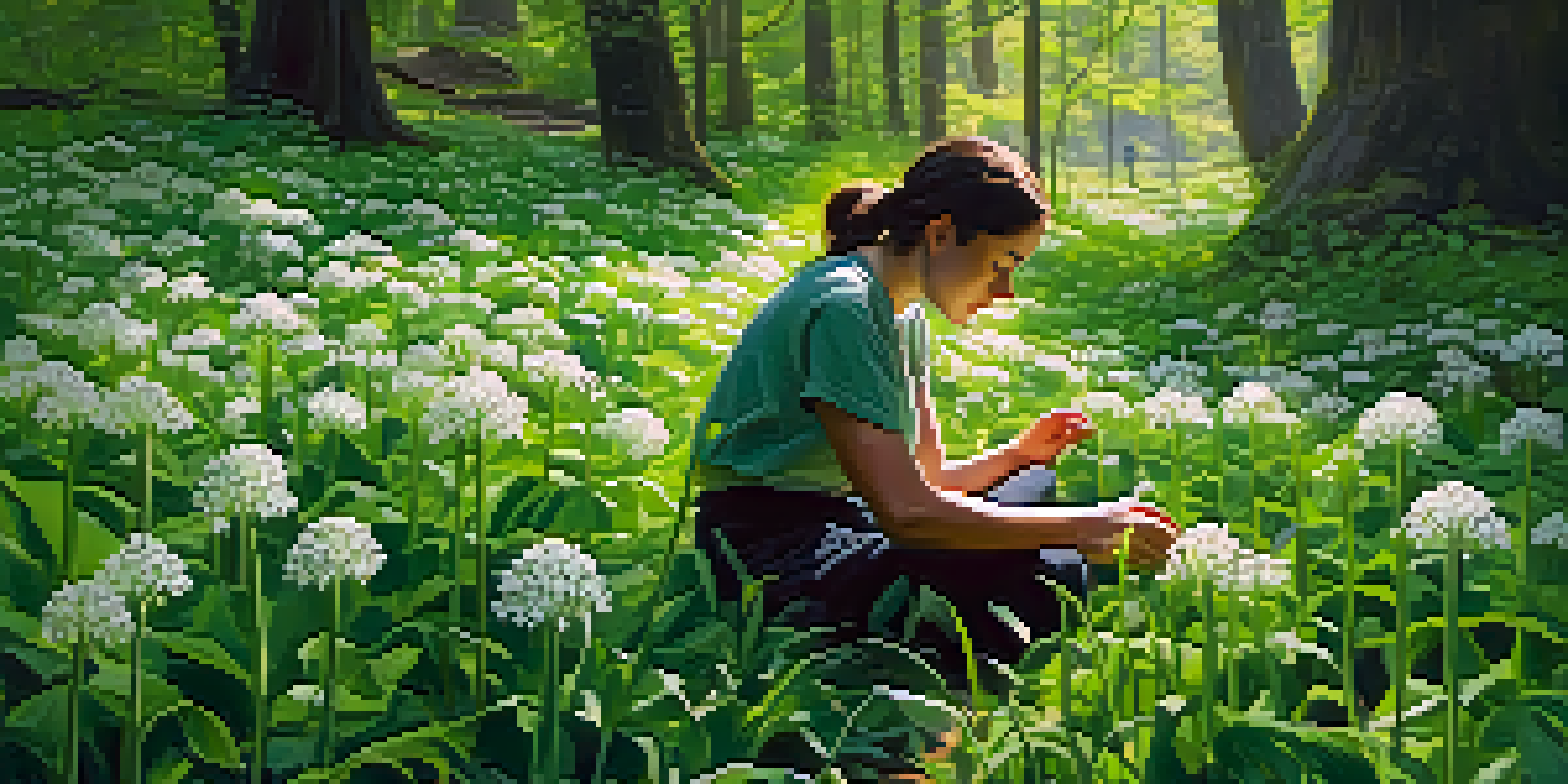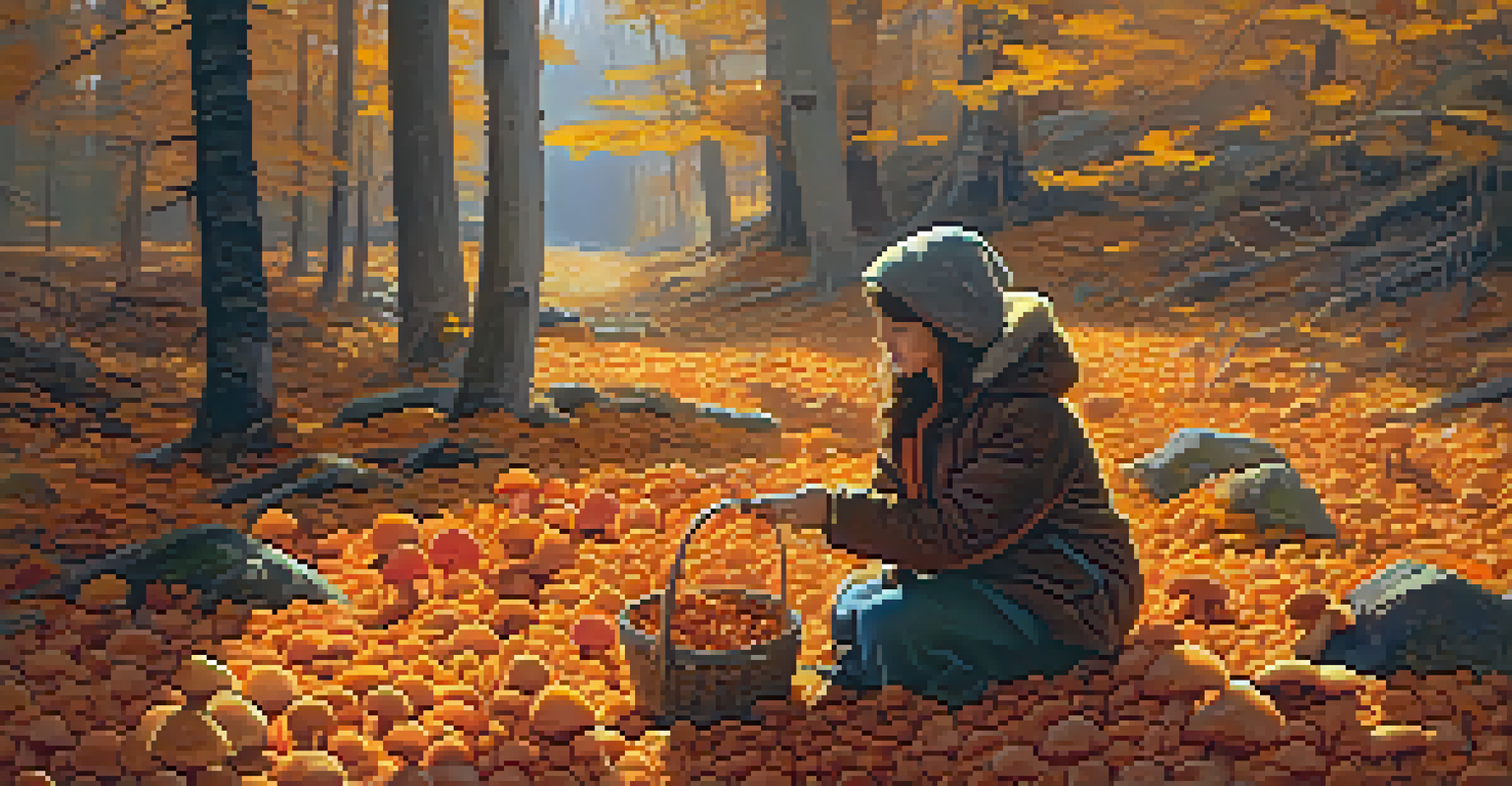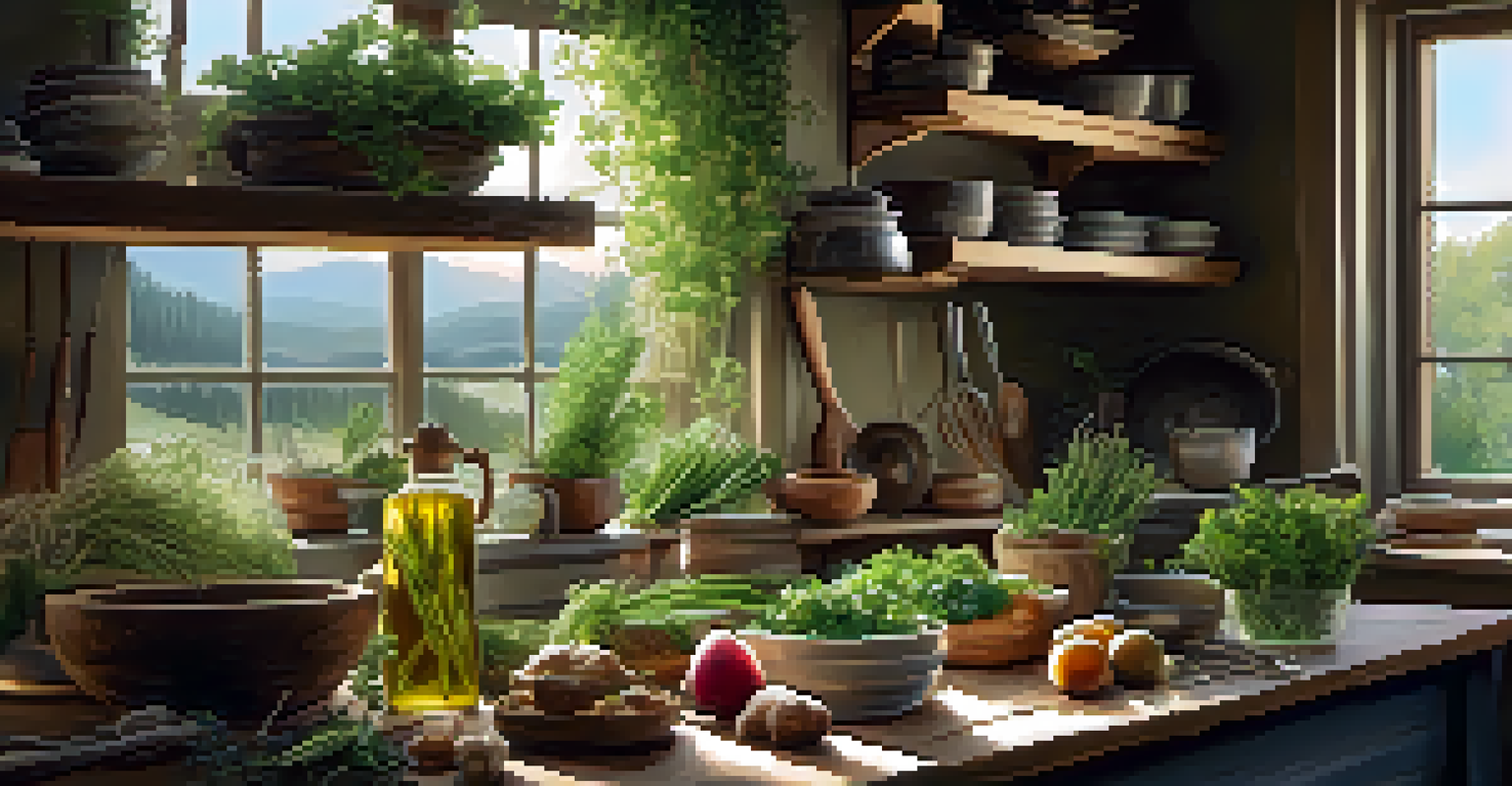Guide to Foraging: Seasonal Wild Plants to Collect and Enjoy

Understanding Foraging and Its Benefits
Foraging is the art of searching for and gathering wild food. It connects you with nature and provides a sustainable way to source your meals. By foraging, you can enjoy fresh, nutrient-rich plants that are often more flavorful than their store-bought counterparts.
Foraging is not just about gathering food; it's about connecting with nature and understanding the world around us.
Moreover, foraging encourages mindfulness and awareness of your local environment. You’ll learn to appreciate the changing seasons and understand the ecosystems around you. It's also a great way to promote physical activity, as you explore trails and green spaces.
Finally, foraging can be a social activity, perfect for sharing experiences with friends or family. Whether you’re teaching someone the ropes or embarking on a group adventure, it fosters a sense of community and shared knowledge.
Essential Foraging Tools and Gear
Before heading out, it's vital to equip yourself with the right tools for foraging. A sturdy basket or bag is a must for collecting plants, while gloves can protect your hands from thorns or irritants. A small trowel or garden knife can also be handy for digging up roots or harvesting mushrooms.

Additionally, a field guide specific to your region can help you identify edible plants accurately. Many modern apps are also available to assist with plant identification, making the process more accessible and interactive. Don't forget a notebook or camera to document your finds!
Foraging Connects You to Nature
Foraging allows you to explore the outdoors, appreciate local ecosystems, and enjoy fresh, nutrient-rich foods.
Lastly, consider wearing appropriate clothing and sturdy shoes, especially if you’ll be trekking through dense underbrush. Being prepared not only enhances your foraging experience but also ensures your safety and comfort in the wild.
Spring Foraging: Edible Plants to Seek Out
Spring is a vibrant time for foraging, with many wild plants bursting to life. Look out for dandelion greens, which are packed with vitamins and can be added to salads or cooked like spinach. Another favorite is wild garlic, whose leaves and flowers offer a delightful, garlicky flavor.
The best way to find yourself is to lose yourself in the service of others.
You might also encounter nettles during spring foraging. While their sting can deter some, cooking them transforms these plants into a nutritious addition to soups and stews. Don't shy away from exploring your local parks and woodlands for these seasonal gems.
Lastly, keep an eye out for wild violets, whose beautiful flowers can be used as a garnish or in salads. Their sweet flavor and striking appearance make them a delightful find in the wild, adding a pop of color to your dishes.
Summer Foraging: Delicious Wild Treats
As the weather warms up, summer brings a bounty of wild fruits and herbs. Blackberries and raspberries can often be found in hedgerows, offering a sweet treat perfect for snacking or baking. Just be cautious of thorns when picking!
Additionally, summer is prime time for foraging herbs like mint and chamomile. These can be used to make refreshing teas or flavor your dishes. Their fragrant aromas are a joy to discover and enhance your culinary creations.
Know Your Foraging Tools
Equipping yourself with the right tools, such as baskets, gloves, and field guides, enhances your foraging experience and safety.
You may also stumble upon elderflower, whose delicate blossoms can be used in cordials or desserts. The subtle floral notes are a wonderful addition to summer drinks, making your foraging efforts all the more rewarding.
Autumn Foraging: Nutritious Roots and Fungi
When autumn rolls around, it’s time to dig deep for roots and search for fungi. Wild carrots and burdock root are excellent finds, providing earthy flavors perfect for soups and stews. These roots are often overlooked but can be quite rewarding to harvest.
Mushroom foraging also peaks in the fall, with varieties like chanterelles and porcini making their appearance. However, it’s crucial to be cautious and knowledgeable about mushroom identification, as some can be toxic. Learning from an experienced forager or taking a course can be invaluable.
Lastly, consider foraging acorns, which can be processed into flour. While a bit labor-intensive, acorn flour offers a unique flavor and nutritional boost to baked goods, connecting you to ancient food traditions.
Winter Foraging: Surprising Finds in the Cold
While winter may seem barren, there are still opportunities for foraging. Look for evergreen plants like pine, whose needles can be steeped for a vitamin C-rich tea. You may also find various winter greens, such as lamb's quarters, that can thrive in cooler temps.
Another surprising find is the winter root vegetable, such as sunchokes (Jerusalem artichokes). These tubers pack a nutty flavor and can be roasted or added to soups. They’re a perfect way to add some variety to your winter meals.
Seasonal Finds Enhance Meals
Each season offers unique foraging opportunities, from spring greens to winter roots, which can elevate your culinary creations.
Lastly, consider foraging for tree bark, like that of the slippery elm. The inner bark can be harvested and used for medicinal teas, connecting you with traditional practices. Winter foraging may require more effort, but the rewards are certainly worth it!
Safety Tips for Foraging Wild Plants
Safety should be your top priority when foraging. Always ensure you can positively identify a plant before consuming it; many edible plants have toxic look-alikes. When in doubt, consult a local expert or a reliable guidebook to avoid any risks.
Additionally, avoid foraging in areas that may be contaminated, such as roadsides or industrial sites. Pesticides or pollutants can linger in these environments, making the plants unsafe to eat. Stick to clean, natural areas like parks or nature reserves.

Finally, practice sustainable foraging by taking only what you need and leaving enough for wildlife and future growth. Respecting nature not only preserves the ecosystem but also ensures ample foraging opportunities for the future.
Cooking and Enjoying Your Foraged Finds
Once you've gathered your wild plants, it’s time to get creative in the kitchen! Incorporating foraged ingredients into your meals can elevate your cooking. Consider making a wild salad, blending greens, flowers, and herbs for a colorful dish bursting with flavor.
You can also try infusing oils or vinegars with your foraged herbs, adding a unique twist to your culinary creations. These homemade condiments can enhance your meals and impress your guests with their freshness and originality.
Lastly, don't forget to share your foraged meals with friends and family. Hosting a foraged feast can be a delightful way to showcase your hard work and introduce them to the unique flavors of wild plants. It’s all about enjoying nature's bounty together!